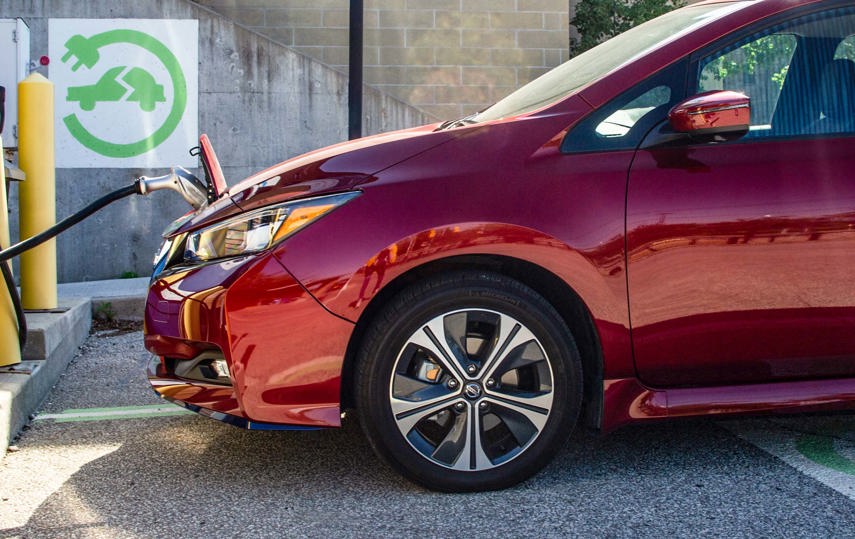Late last year, the Government of Canada announced the new Electric Vehicle Availability Standard, which mandates an increase in the number of electric vehicles (EVs) sold in Canada. In short, by 2026, 20 per cent of all new cars sold in Canada must be electric, and that number increases to 60 per cent in 2030, and 100 per cent in 2035.
Following the announcement, Don Romano, president and CEO of Hyundai Auto Canada pointed out the obvious obstacles to turning this new standard into reality. Besides the lack of a comprehensive national charging infrastructure, Romano explained that electric vehicles, “are currently more expensive to manufacture,” and that the federal government needs to “continue offering Canadians financial support to bridge that transition, and achieve the zero-emission vehicle sales target goals outlined today.”
In other words, although Canadians might be willing to purchase an electric vehicle, the costs are still prohibitive. AutoTrader research shows that 40 per cent of Canadian car shoppers say high EV prices are holding many of them back from purchasing one for their next vehicle. While the $5,000 federal incentive and the additional incentives available in some provinces and territories can help offset the purchase price of an EV, it’s clear that EVs still aren’t affordable for the average Canadian consumer.
A Different Perspective
While the sticker shock EV shoppers experience is real, a new study published by automotive research firm Vincentric looks at the cost scenario from a different perspective. In fact, Vincentric’s 2023 Canadian Electric Vehicle Cost of Ownership Analysis found that 38 of the 40 electric vehicles it analyzed had a lower total cost of ownership than comparable gasoline-powered vehicles.
This means that although in most cases EVs cost more to purchase than their gasoline-powered counterparts, in the long run, EVs can actually save you money. That’s because you’re paying much less to “fuel” your vehicle with electricity than you would to buy gasoline. In addition, many of the maintenance costs associated with owning a gasoline-powered vehicle disappear when you drive an EV.
“Personally, it surprised me how well a lot of these EVs do in terms of cost of ownership,” admits David Wurster, president of Vincentric. “In spite of a price premium, they seem to make up for those numbers pretty rapidly.”
A Closer Look at the Numbers

Vincentric began its research by matching 40 model year 2023 EVs with comparable gasoline-powered vehicles, based on similar specifications, pricing, residual values, and other data points. When possible, the same make and similar body style were selected as the comparison vehicle. The researchers then assumed that all the vehicles would be driven 25,000 km per year over a period of five years.
After crunching the numbers, Vincentric came to the conclusion that all 40 of the EVs it analyzed had lower “fuel” costs than their gasoline-powered counterparts. Over five years, EV fuel cost savings ranged from $13,306 for the Hyundai Kona EV, to $31,697 for the Tesla Model X. Overall, EVs saved their owners an average of $19,353 in fuel costs over a five-year period versus a comparable gas-powered model.
Lower Maintenance Costs
Maintenance costs, according to this research, were typically lower with EVs, “since the electric motors that power EVs have fewer components and moving parts than internal combustion engines.” However, only 34 of the 40 EVs had lower maintenance costs. The EVs that had higher maintenance costs than their gasoline counterparts were the Audi e-tron, Audi Q4 e-tron, Mercedes-Benz EQE, Mercedes-Benz EQS, Mercedes-Benz EQB, and the Jaguar I-Pace.
In this analysis, Vincentric based maintenance costs on OEM-recommended maintenance schedules, and it included unscheduled maintenance items that need to be replaced due to normal wear and tear. Although these include items like tires and batteries, Vincentric did not factor in the cost to replace the lithium-ion batteries that power EVs, “because available data on EVs does not show that these batteries need to be replaced within the five-year timeframe covered in the analysis.”
“If the evidence proved that all of these vehicles are going to need a $20,000 battery 10 years down the road, that would change things. But I haven’t seen that evidence,” Wurster adds. “I’ve seen anecdotal evidence, and you read articles about someone having to pay $40,000 for a battery replacement, but I haven’t seen that on a large scale.”
Maintenance cost savings over the five-year period varied dramatically, depending on the EV, ranging from $122 for the Chevrolet Bolt EUV to $13,508 for the BMW i7.
Payoff Period
Another interesting finding is how long it takes an EV to make up for its premium price tag. Of the 31 EVs in the study that had a higher price tag than their gasoline-powered counterpart, five recouped their price premium within the first year of ownership, and an additional six did so within five years. The rest made up for their premium price tag in six, seven, or more years. But it’s important to understand that vehicles, electric or otherwise, are depreciating assets, and drivers shouldn’t expect a car to ever “pay itself off,” but it is interesting to see when the price premium is neutralized.
On average, EVs had a price premium of about $11,000 when compared with their gasoline-powered counterparts, and an average of over $15,000 in ownership cost savings.

Top 10 Lowest Cost to Own EVs in Canada
Based on its research, Vincentric determined that the following 10 EVs have the lowest total cost of ownership:
| Rank | Vehicle | Total Ownership Costs Over 5 Years |
|---|---|---|
| 1. | Volkswagen ID.4 Base 4D Utility RWD | $43,477 |
| 2. | Nissan LEAF SV 5D Hatchback | $47,466 |
| 3. | Kia Soul EV Premium 5D Hatchback | $47,616 |
| 4. | Chevrolet Bolt LT 5D Hatchback | $49,622 |
| 5. | Hyundai Kona EV Preferred 4D Utility | $50,507 |
| 6. | Kia EV6 Standard Range 4D Utility RWD | $50,907 |
| 7. | Mini Cooper EV SE 3D Hatchback | $50,989 |
| 8. | Chevrolet Bolt EUV LT 5D Hatchback | $51,870 |
| 9. | Kia Niro EV Premium 4D Utility | $52,218 |
| 10. | Toyota bZ4X L 4D Utility FWD | $52,892 |
Government Incentives
One of the key questions this study set out to answer is whether the $5,000 EV incentive offered by the federal government makes or breaks the cost-to-own equation.
To answer that question, Vincentric looked at the 23 EVs in its study that qualified for the $5,000 incentive (passenger cars where the base MSRP is below $55,000; station wagons, pick-ups, SUVs, minivans or vans where the base MSRP is less than $60,000).
When Vincentric included the incentive, it found that all 23 EVs had a lower cost of ownership than their gasoline counterparts. However, without the incentive, only 18 of the 23 had a total cost of ownership advantage. Its conclusion: Qualifying for the federal rebate is not a requirement for EVs to save their buyers money, but it certainly helps.
Depreciation & Environmental Costs

Another interesting conclusion from this analysis is the fact that EVs aren’t depreciating as quickly as they once used to when they were first introduced to the market. According to researchers, “despite the higher depreciation cost for most EVs overall, the results did show that 27 of 40 EVs analyzed had lower depreciation rates than their ICE [internal combustion engine] alternative.”
Finally, the report addressed the environmental impact of EVs, which is one of the main reasons why some consumers want to replace their gasoline-powered vehicles with an EV.
Vincentric put emissions in perspective with this statement: “Although it’s true that EVs don’t generate tailpipe emissions, their use of electricity means that driving an EV typically results in greenhouse gas emissions because the process of generating the electricity that powers EVs normally creates greenhouse gas emissions.”
Furthermore, greenhouse gases are produced when suppliers have to mine the minerals needed for EV production, and when they have to transport the necessary raw materials and parts to the factories and assembly plants that make the EVs. Greenhouse gases are also produced to power the factories and assembly plants where parts are made and where EVs are assembled. Some automakers are trying to address this by making their EV factories carbon-neutral, but not everyone is on board yet.
“It’s not as simple as tailpipe emissions,” Wurster says. “You’re still creating emissions in the process, it’s just not coming out of the vehicle.”
This analysis should be helpful for consumers who are contemplating the purchase of an EV, but hesitating to take the plunge because of the price of the vehicle. While the price premium is real, and consumers are going to pay more to purchase an EV, looking at the total cost of ownership rather than the MSRP alone should help potential EV buyers decide what’s best for them.
“You need to look at the lifecycle when you decide whether a car is expensive or not,” Wurster concludes. “In many cases, one vehicle may cost more than another, but it costs you less to own over time.”

